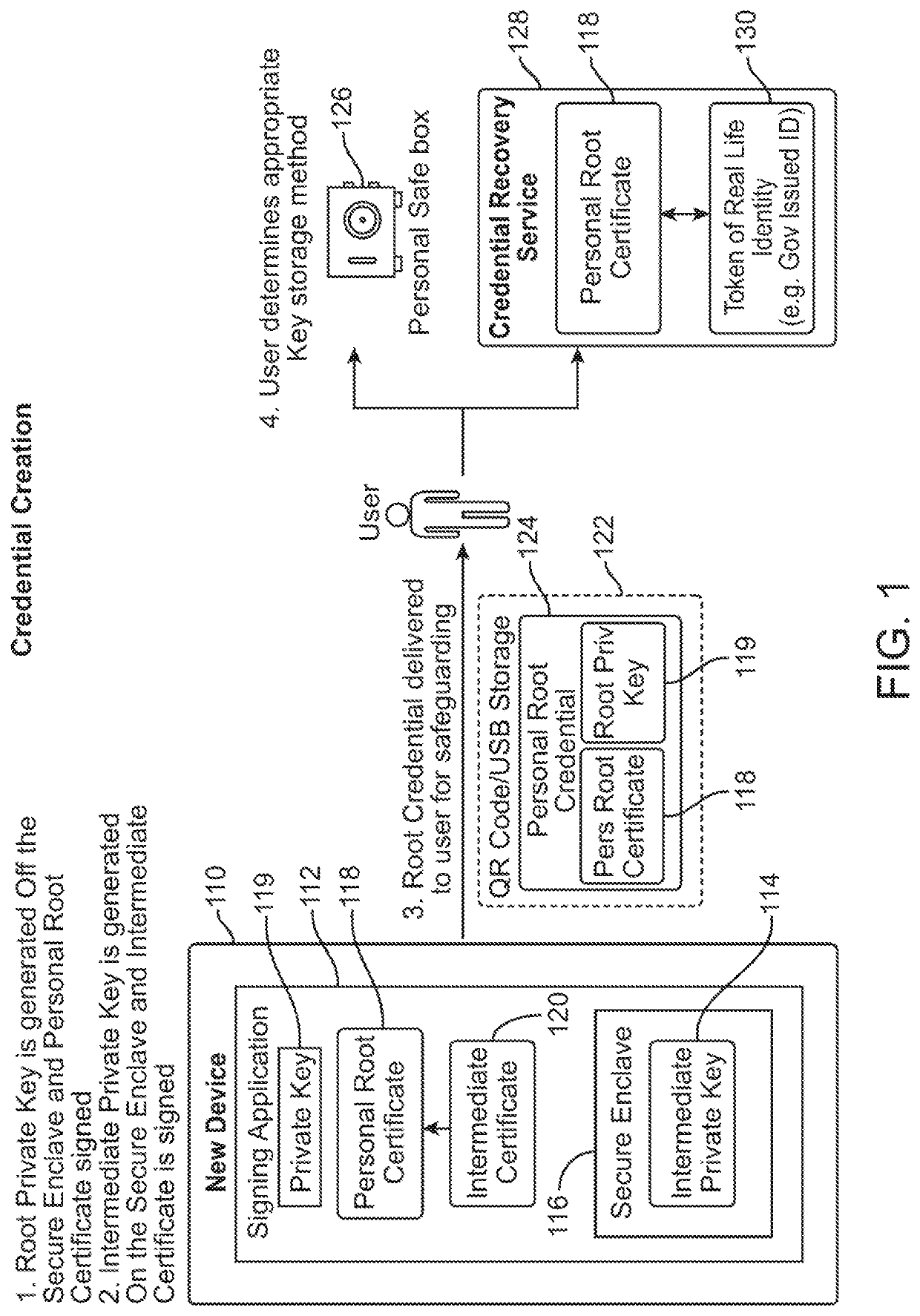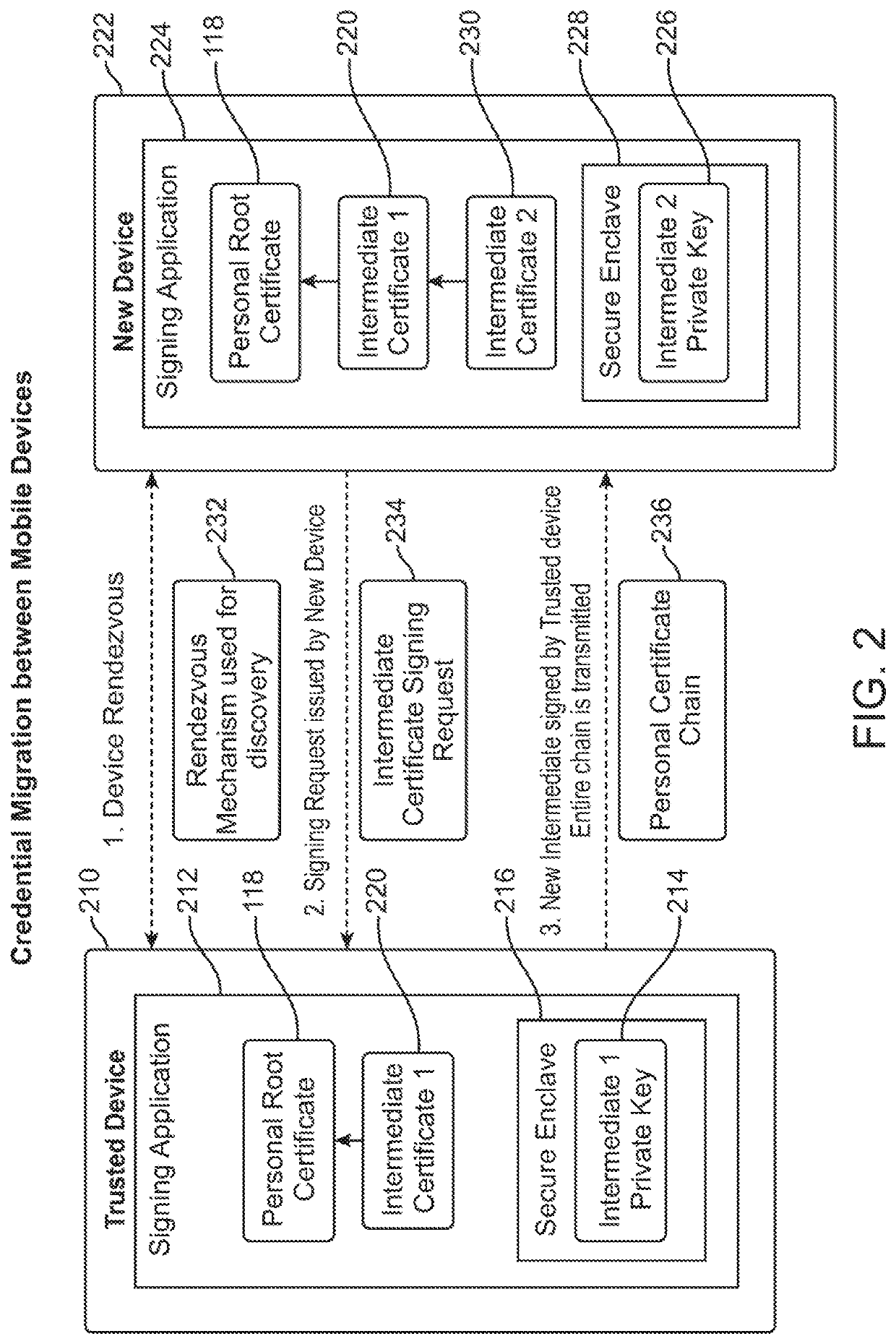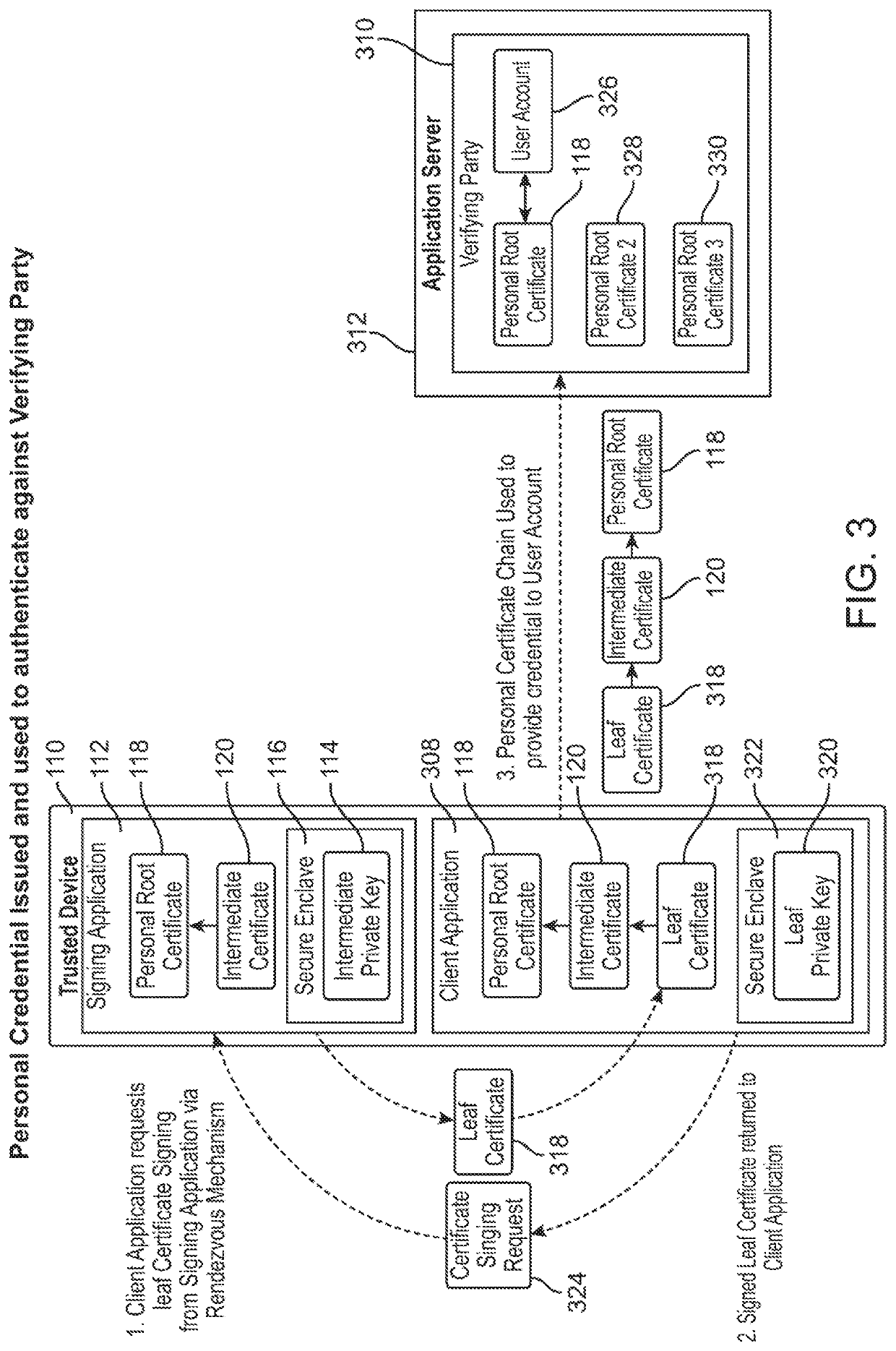User authentication with self-signed certificate and identity verification
a self-signed certificate and user technology, applied in the direction of public key infrastructure trust models, digital transmission, securing communication, etc., can solve the problems of not even software in the cloud service can read the bundled data, not having the capacity to exchange the entire payload necessary, and not having the capacity to include other private information, so as to achieve easy migration of trust and recover from loss of all devices
- Summary
- Abstract
- Description
- Claims
- Application Information
AI Technical Summary
Benefits of technology
Problems solved by technology
Method used
Image
Examples
Embodiment Construction
Overview
[0035]The present invention leverages the availability of TLS on web servers. The present invention provides a way to use TLS with self-signed certificates, eliminating the need for external, third-party CAs, and obviating the need for the WebAuthn and other alternatives for client authentication.
[0036]Self-signed User Certificates. A self-signed certificate used with TLS cannot alone authenticate a specific individual, but it does achieve an essential part of the authentication process: it guarantees possession of the private key by the client presenting a certificate. When the chain validation process and challenge / response are successful, then by definition the client initiating the connection indisputably possesses the private key and therefore owns the public-key certificate used to make that connection. But a self-signature cannot establish identity, as anyone could otherwise claim to be someone else. However, the self-signed certificate will uniquely identify the same...
PUM
 Login to View More
Login to View More Abstract
Description
Claims
Application Information
 Login to View More
Login to View More - R&D
- Intellectual Property
- Life Sciences
- Materials
- Tech Scout
- Unparalleled Data Quality
- Higher Quality Content
- 60% Fewer Hallucinations
Browse by: Latest US Patents, China's latest patents, Technical Efficacy Thesaurus, Application Domain, Technology Topic, Popular Technical Reports.
© 2025 PatSnap. All rights reserved.Legal|Privacy policy|Modern Slavery Act Transparency Statement|Sitemap|About US| Contact US: help@patsnap.com



